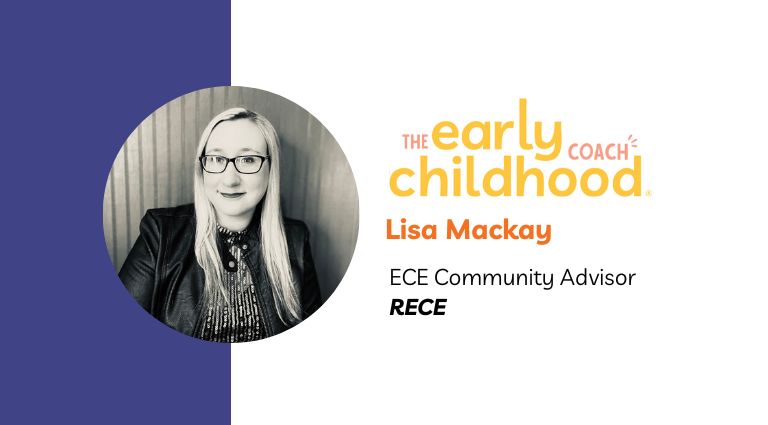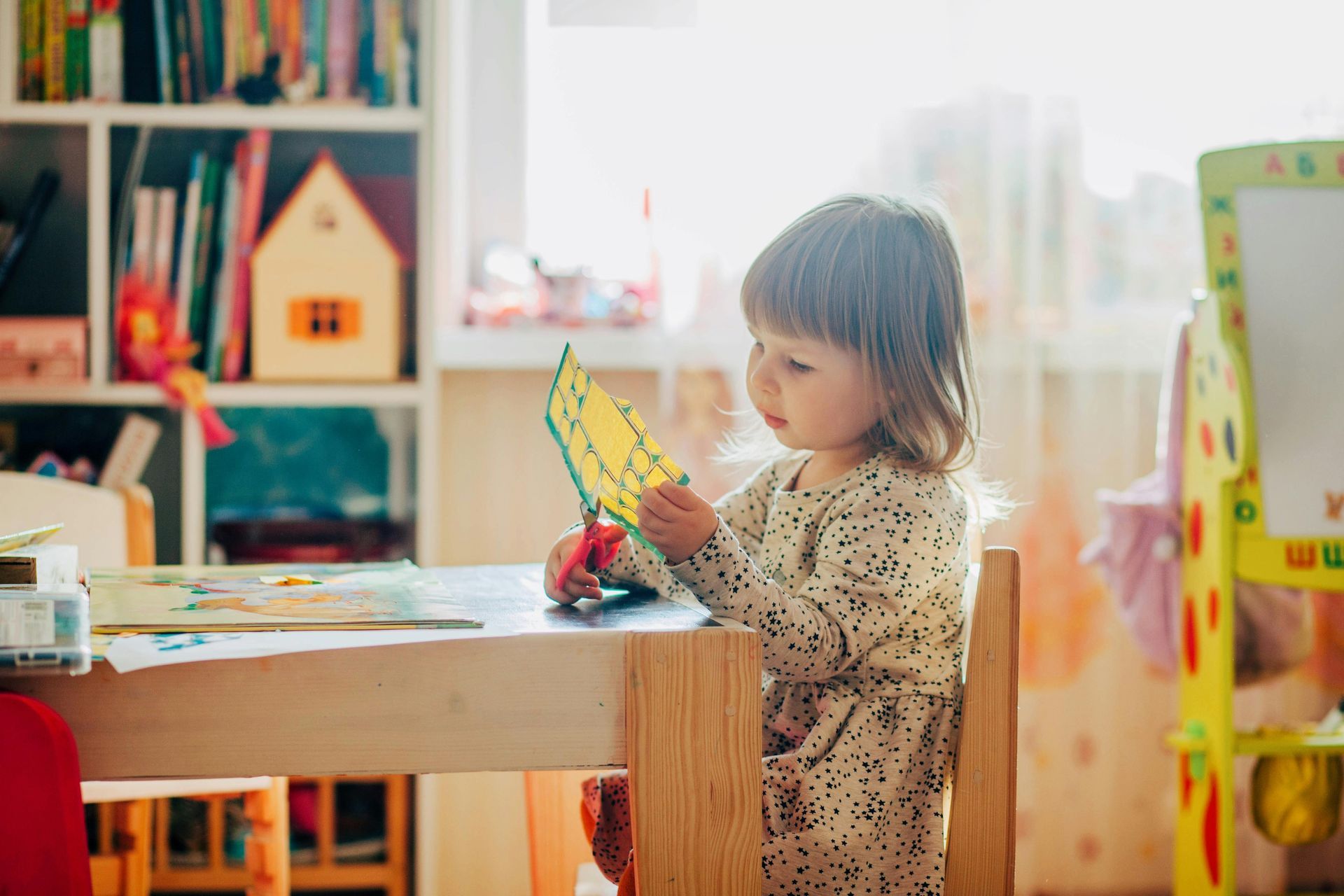Create an Inclusive Classroom: Child-Centered Strategies that Support a Sense of Belonging
Anisha Grossett • November 30, 2023
The classroom setup: an exciting endeavor met by nearly every educator. Classroom setup should always be intentional, whether it's the start of the school year, a move to a new classroom, or you just want to break up the monotony with a makeover. How a classroom looks, sounds, and functions is essential for children's learning. In fact, Loris Malaguzzi, the founder of the Reggio Emilia approach to education, coined the phrase "Third Teacher" (after parents and educators) when referring to the classroom environment.
There are many things to consider when you set up a classroom, such as furniture placement, learning centre offerings, and materials placement. What’s even more essential is the feel of your classroom. Children enter early learning programs with diverse backgrounds, perspectives, and needs. When you create a classroom where every child feels seen and heard by caregivers, you foster a sense of belonging and well-being for all the children in your care.
How can we ensure children feel valued, celebrated, and have a sense of belonging in their classroom? Let's examine six essential components that help children feel safe and secure in their learning environment.
Create a Classroom Where...
Children Feel Seen
- Offer diverse materials and books that display different families, skin colours, and cultures to help children feel represented. For example, ensure you offer crayons and paints include a full spectrum of skin tones, dolls of different races, and storybooks with alternative family units.
- Display children's pictures around the room to show they are a valuable part of your classroom.
>> Access to a diverse library of books is essential for children. Visit The ECC’s Amazon storefront
for an epic list of inclusive books!
Children Feel Heard
- Consider who is doing the talking. Are you speaking the most at group times while the children are quiet? Get them to open up and participate in fun ways. Choose a child to lead a song or game each day!
- Invite children to co-construct the learning environment with you (in age-appropriate ways). These fun questions might get them started:
- How could we change the dramatic play centre?
- What materials do you think we will need?
- I have a new train set to put out; where would you like to play with it?
- Provide a quiet space in your classroom where children can go when they feel overwhelmed or stressed. Cozy pillows or a bean bag chair with fidget toys or books can help calm a child quickly.
Creativity Is Encouraged
- Allow lots of time for creative expression. Art is one of the many ways children share their thoughts, feelings, and growing sense of self and interpretations of their world.
- Offer a variety of materials for visual arts, including different types of scissors, thicknesses of drawing and painting tools, and different colours, sizes, and textures of paper.
- Offer scarves, music, pieces of fabric, puppets, and props for children to act out their thoughts and feelings.
- Provide open-ended materials, such as loose parts, for children to express their ideas.
Achievements Are Celebrated
- Hang children's artwork at eye level to share with the class.
- Ensure children see their names around the classroom in various contexts, i.e., on name cards, photos, and in class books.
- Highlight big and small wins with the class, such as a structure someone worked hard on in the block centre or a student's newest drawing.
- Share successes with parents and families through daily discussions, parent boards/newsletters, or digital tools.
Children Feel Valued
- Consider children in all decision-making first and foremost.
- Build connections with children by asking questions about their learning, making eye contact, playing alongside them, sharing excitement, and respecting their ideas and feelings.
- Build relationships with families by getting to know them, celebrating successes, supporting needs, and openly communicating.
>> It’s vital for educators to feel seen and valued too! The ECC offers many workshops on diversity, ECE appreciation, and much more.
Download our full list to see how we can help!
Curiosity Is Cultivated
- Honour children's questions about the world around them. Instead of giving them the answer, offer tools to help them identify solutions on their own!
- Develop their sense of place. Provide natural elements in their day, such as helping them care for child-safe plants. Maintain connections to the outdoors with bird watching or cloud gazing.
- Ask about their interests and help them investigate!
When you consider these child-centric components during classroom setup, you can be confident that you are fostering a sense of belonging and community in your classroom. Below you will find additional resources for even more ideas that encourage inclusion. When children feel included in the classroom process, and their identities are at the forefront of our planning, they recognize themselves as an essential part of their classroom community.
Resources


As educators, we know the environment we create plays a vital role in shaping the learning experiences of children. A well-organized, thoughtfully designed classroom sets the stage for creativity, exploration, and growth—all while promoting positive behavior and independence. Whether you're setting up your classroom for the first time or giving it a mid-year refresh, these actionable tips will help you create a welcoming, functional, and inspiring space for success.

It was a typical morning in the classroom. The hum of busy little hands and curious minds filled the air. Maya, an Early Childhood Educator (ECE), glanced around, her heart swelling with pride. It was moments like these—when a child’s eyes lit up with understanding or when a shy toddler found the courage to join a group—that reminded her why she chose this path. Yet, deep down, Maya often wondered: Am I really a leader? Perhaps you, too, have asked yourself the same question. The word "leader" may bring to mind images of CEOs in boardrooms or heads of organizations rallying teams. But let’s shift that perspective. Leadership isn’t about titles; it’s about influence, impact, and the way you inspire those around you—adults and children alike. As an ECE, you are already a leader. The question is, how can you activate your leadership fully? Let’s take a journey together, exploring how to unlock the leader within. Because here’s the truth: Every ECE is a leader in early childhood education.

As early childhood educators, we hold the unique and powerful responsibility of shaping the next generation. But let’s be honest—between navigating ever-changing policies, meeting families’ expectations, and balancing personal and professional responsibilities, it’s easy to feel burnt out or stuck. If you’ve been yearning to rediscover your why and fall back in love with your role, you’re not alone. Today, let’s explore five simple, transformative steps to reignite your passion for early childhood education and create meaningful impact in the classroom, your team, and yourself.

As the calendar turns to 2025, there’s an undeniable sense of renewal in the air—a feeling that this could be your year. For early childhood educators, this “new year, new you” vibe isn’t just about setting goals; it’s about embracing the opportunity to become the best version of yourself, both personally and professionally. Whether you’re looking to innovate your teaching methods, deepen your connections with students, or enhance your own well-being, 2025 holds the promise of powerful growth. At The Early Childhood Coach, we’re here to support you every step of the way. Let’s dive into some actionable tips to help you kick off the year with confidence, and we’re excited to introduce our upcoming virtual summit designed to supercharge your 2025 goals.

As the holiday season approaches, it’s easy to get swept up in the whirlwind of festivities, end-of-year tasks, and planning for the new year. For early childhood educators, this time can be particularly demanding. However, it’s also a crucial opportunity to rest, reflect, and recharge. Taking time to pause and consider the past year not only supports your well-being but also sets the stage for a more intentional and fulfilling year ahead. Why Rest and Reflection Matter As educators, you give so much of yourself throughout the year. Your energy, creativity, and dedication are poured into nurturing young minds, supporting families, and fostering a positive learning environment. The holiday season is a perfect time to step back, acknowledge your hard work, and give yourself permission to rest. Rest isn’t just about physical relaxation; it’s about mental and emotional rejuvenation too. Reflecting on your experiences helps you gain insights, celebrate successes, and identify areas for growth. Tips for Resting and Reflecting During the Holidays

Early childhood education is a field that thrives on collaboration and teamwork. Your success as an educator is intertwined with the collective efforts of your coworkers. Being a team player goes beyond simply working alongside others; it involves actively contributing, supporting, and collaborating with your colleagues to create a nurturing and enriching environment for young children. Read on to discover six core components of teamwork and their profound impact on team dynamics and the quality of care provided to children.

As we celebrate Early Childhood Educator (ECE) Appreciation Day/Month, it’s the perfect time to reflect on the incredible contributions of early childhood professionals. Beyond the daily routines, lessons, and activities, early childhood educators leave a lasting legacy that shapes the future. Here’s how ECEs can ensure their work creates a meaningful and enduring impact. The Importance of Legacy in Early Childhood Education Leaving a legacy means creating a lasting impact that benefits others even after you have moved on. This legacy is seen in the positive experiences, knowledge, and values imparted to young children in early childhood education. It is about making a difference in the lives of children, families, and the community, influencing educational practices, and advancing the field.

Are you an Early Childhood Educator (ECE) embarking on the journey of securing a new job, either as a classroom teacher or as a supervisor/leader? Congratulations on taking this step forward in your career! However, before you land your dream position, you'll need to learn some important tips and tricks to ace the interview process. Interviews can be nerve-wracking, but with the right preparation and mindset, you can confidently showcase your skills and expertise to an employer and highlight why you’re the ideal person for the job. Here are some essential dos and don'ts to help you navigate the interview process successfully:

Early childhood education stands as one of society's most crucial fields. Guiding our youngest learners through their formative years is a weighty responsibility, one that early childhood educators approach with utmost care. At the forefront of this effort, often leading organizations, are Early Childhood Supervisors or Managers. In this pivotal role, decisions are made, environments are shaped, and staff are empowered to deliver the finest early learning experiences possible. While leadership in early childhood education offers numerous rewards, it also brings forth significant responsibilities. Leadership within early childhood education is both essential and fulfilling. Your dedication to staying abreast of current trends, managing operations, and fostering support and inspiration among your team is invaluable. The field relies on leaders like you to advocate for the vital work of early childhood educators, cultivate nurturing environments for children, and provide ongoing professional development for staff. However, amidst these responsibilities, there lurks the risk of burnout and stress. Juggling heavy workloads and making independent decisions can leave early childhood leaders feeling isolated, like solitary figures navigating their own islands of responsibility and control. Sound familiar? Consider this analogy: when you board an airplane, the crew instructs you to don your oxygen mask first in case of an emergency, ensuring your well-being before assisting others. The same principle applies to leadership. If leaders neglect their own well-being, their ability to support others diminishes. So, I pose the question, "What about you?" What measures are you taking to prioritize your own well-being? Who is looking out for you? By integrating a few essential practices into your routine—such as fostering collaboration, setting boundaries, and nurturing self-compassion and self-care—you can thrive as a successful leader without sacrificing your own well-being. Here are some tips to assist you on your journey as a leader in early childhood education: Foster Collaboration: Identify individuals within the organization who may be interested in contributing to various initiatives and special events. Seek diverse opinions and perspectives when tackling challenges. Encourage ongoing feedback from staff, fostering a culture of open dialogue and problem-solving within the organization. Set Boundaries to Establish Precedence: Define clear work hours and endeavor to adhere to them. Communicate your response times during weekends and vacations clearly. Determine the value of your time and energy and resist overcommitting. Respect your team's boundaries, leading by example. Cultivate Self-Compassion and Self-Care: Extend kindness to yourself during stressful moments or difficult days. Take breaks to recharge and regain focus. Incorporate movement into your workday, whether through stretching or short walks, to rejuvenate your body and mind. Immerse yourself in nature, even if only for a few minutes, as studies show it can elevate mood. Cultivate a support system, even if it consists of just one person you can confide in. Spend time with the children whenever possible; their joy is sure to uplift you. Maintain a journal to track your emotional and physical well-being. Reflect on your entries periodically to discern any patterns or changes over time. By prioritizing collaboration, setting boundaries, and nurturing self-compassion and self-care, you can excel in the field of early childhood education while safeguarding your well-being. Remember, you must secure your own oxygen mask before you can effectively support others. Looking for Leadership workshops and training? Have a look at our professional learning opportunities: Empowered Educators with Expert Support | Anisha The ECC

The Relationship Between Educators and Parents It’s often easy for an early childhood educator to identify how comfortable a caregiver or a parent is with the transition of their child into their care. Within the first few interactions, the signs are visible, and this is when educators flag anxious parents as ‘helicopter parents.’ This early judgement can impact the way you interact with the family which is why it’s crucial to recognise a parent’s comfort level while also ensuring that you have the right tools to support and engage with them. Building a line of trust between you and parents sets the tone for all future interactions. But how can you do this effectively? How can you support families with their complex worries and questions without letting it impact your day-to-day work? Here’s a guide to help you achieve just that! The Importance of Recognising An Anxious Parent As educators, there’s no one who understands the transition period for children and their parents quite like us. Research has suggested that parental separation anxiety can manifest in many ways and can begin as early as when the child begins school (Lees, 2022). This is why it’s important to recognise the early signs of an anxious parent and work on ways to offer them the support that they need. Empathising with parents is intrinsic to what we do. Anxiety can manifest in different ways for parents. In the early stages of the transition period, parents usually have several questions about the routine, curriculum, eating and sleeping schedules of their children. These questions usually decrease with time and when they don’t, educators should view this as a potential sign of anxiety. This is also when you can recognise that a parent or caregiver might need additional support to manage their anxieties. You’ll notice that as the days pass, anxious parents feel a sense of panic associated with their growing concerns. This directly has an impact on the children resulting in them missing out on classroom days without any solid explanation. As professionals, we need to chart a course of action to ensure that we can help parents deal with such overwhelming feelings and reassure them over an extended period of time. Steps to Help Parents Overcome Their Anxieties: 1. Starting transition periods early: It’s important to recognise that transition periods should start prior to a child entering your classroom. Speak to your supervisor regarding packages that are sent out before each child starts. Ensure that your name and your team’s name is presented on a welcome letter with a quick introduction. This small detail will allow parents to feel included during this transition period. Always remember it is important for families to feel connected with their child’s educator. 2. Communication is key: During the transition period, you will need to be extremely attentive to parents. Ensure that you engage with them every day and provide an accurate and in-depth overview of their child’s day. It is important that the parent feels heard and understood. Address each concern with a possible solution and let them know that it is normal to feel anxious during this period. A useful strategy is to use the positive, negative, and positive rule when interacting with a new family. While it is important to provide accurate information, we do not want to overwhelm parents with the negative. Here’s a good example: “Johnny had a great morning! We were able to get him to sit at the table for breakfast, he did cry during nap time and didn’t sleep much however he engaged well in the afternoon and began exploring the playground with his peers.” As the days pass, remember to share a child’s wins with their parents. This directly allows parents to still feel connected and an active part of their child’s learning and development despite not being physically present. Show that you are taking the time to learn about their child by asking the right questions. What do you do at home when he cries? What activities does he enjoy at home? What has his sleep/eating schedule been like? These are great questions to let parents know that you are committed to their child’s well-being. 3. Using technology as an aid: The advancement of technology can immensely support educators while dealing with parental anxiety and childcare. Use relevant apps, tools and technology to stay connected with families and offer them the reassurance that they need. Always ensure your reports are up to date and accurate and try including pictures and videos of the child spending their day in your classroom. This will provide parents instant relief as they get a chance to observe their child in their absence. It’s also an easy way for them to check in throughout the day and communicate with the classroom educator as needed. Remember, it all gets better with time! Separation anxiety can impact everyone including the child, the parent, educators and sometimes even other children in the classroom. Despite this hurdle, it is important to focus on the fact that it can resolve itself with time and patience. Use resources, peers, and leaders to support you in difficult moments and ensure you recognise your own stressors first in new situations before you extend support to others. You are just as important in this journey and deserve to give yourself the attention that is needed to feel prepared to tackle anxious parents. While it’s always delightful to interact with children and their parents who require little to no transition time, it’s more likely that we will be engaging with the ones that do need additional support. Feeling a sense of nervousness while starting a childcare journey is only natural but with the right kind of guidance from an educator, parents can leave their anxieties behind. Together, you can ensure that every child has access to the support and encouragement they need to thrive. References: Coping with separation anxiety: Parenting - CCCF. Canadian Child Care Federation. (2023). https://cccf-fcsge.ca/ece-resources/topics/preparing-the-learning-environment/coping-separation-anxiety Cpi. (2022, July 19). Beyond the student: How educators can help alleviate parental anxiety: Crisis prevention institute (CPI). Crisis Prevention Institute. https://www.crisisprevention.com/en-CA/How-Educators-Can-Help-Alleviate-Parental-Anxiety Lees, E. (2022a, May 5). What is parental separation anxiety? https://happiful.com/parentalanxiety Lorina, L. (2017, February 3). Supporting families with separation anxiety in childcare. Aussie Childcare Network. https://aussiechildcarenetwork.com.au/articles/childcare-articles/supporting-families-with-separation-anxiety-in-childcare
